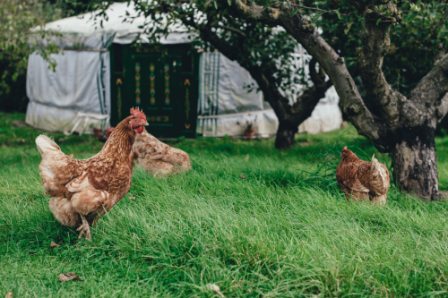
Many Vermonters try to eat food that’s not only good for them, which you would think wouldn’t be that hard. But when everything from cheese puffs to soda is labeled “natural,” it can be tough to know what you’re actually eating.
Some food labels are highly regulated with very clear legal definitions. Others are pretty vague, and you might have to do some research into the source.
Here’s a breakdown of some common food labels to get you started.
Organic
Food labeled organic means ninety-five percent of the ingredients must be grown organically, as certified by a USDA inspector. Organic food is grown without most pesticides, synthetic fertilizers or bioengineering, with a focus on conservation and renewable resources. Organically raised animals are not given growth hormones or antibiotics. Keep in mind that some smaller farms may not have gone through the certifying process, so don’t hesitate to ask how your food was grown or raised.
100% Organic
One hundred percent organic means the product contains only organically produced ingredients and processing aids, excluding water and salt.
Made With Organic Ingredients
A product can have this phrase if it has at least 70 percent organic ingredients, but the USDA seal cannot be used on the packaging. Any less than 70 percent organic ingredients, and the word “organic” can’t show up anywhere on the main packaging. Organic ingredients can be identified in the ingredients list.
Free Range
Free range means that animals have to have access to the outdoors, but they may never actually spend any time outside. The USDA does not require any specific amount of outside time. If free range eggs or meat are important to you, try local sources where you can see for yourself whether their definition of free range meets your own.
Cage Free
Cage free eggs are theoretically laid by hens that can roam around in barns, but not outside. This term is not regulated by the USDA, however.
Sustainably Harvested
This term has no legal definition or restrictions.
Natural
Natural is a largely unregulated marketing term that often means very little. In meat and poultry, natural means no artificial coloring or ingredients added and “minimal processing,” but doesn’t include anything about how the animal was raised.
0 Grams Transfat
Less than 0.5 grams of trans fat per serving.
Fat Free
Contains less than 0.5 grams of fat per serving.
Heart Healthy
3 grams or less of fat and at least 0.6 grams of soluble fiber
Vermont Regulations
Farm Fresh
This term means produce comes directly from the farm to the store and not to a distribution or packaging center first.
Local
By itself, local means food grown or raised within 30 miles.
Native
Native means food grown in the state of Vermont, unless otherwise noted.
Vermont Certified Organic
This seal means food is certified organic, with at least 95 percent of ingredients grown or raised in Vermont. This is a third-party organic certification, accredited by the USDA.
For more information on food labels, visit Greenerchoices.org.
This article was contributed by Brighton Luke.
 Related Articles & Free Subscription
Related Articles & Free Subscription
Five Dietary Tips to Help Your Memory






Comment here